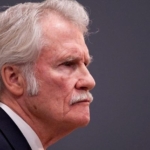
A colleague who is a respected reputation adviser asked how many organizations had updated their crisis plans to account for the coronavirus pandemic. A better question is how many organizations included a pandemic and its far-reaching ramifications in their crisis plans before the virus swept across the globe.
Major externalities that result in massive operational and economic disruption are, hard to believe, easy to overlook. Even though there have been several recent pandemics or major health scares, their threat quickly fades from the news and advance planning for the next one drops off the radar. It is far easier – and perhaps more reassuring – to list localized threats with manageable responses instead of calamities that demand seemingly unimaginable responses.
As the first step in crisis planning, issue audits are intended as full-screen examinations of threats and vulnerabilities. Pandemics belong on that list. While the effects of a pandemic can vary greatly from organization to organization, there are impacts to nearly every organization. If you run a hospital, the impact is obvious. If you manufacture medical equipment, the impact can be complex – you may have a rush of orders for ventilators, but badly disrupted supply chains to make them.
Unlike many crises that have a geographically limited impact, pandemics can affect almost everybody on the planet. All crises require careful thought; pandemics demand expansive and innovative thought.
Former Governor John Kitzhaber, who is an emergency physician, issued a five-page letter that illustrates expansive and innovative thought regarding projected shortages of hospital beds and ventilators for seriously ill COVID-19 patients. To combat a shortage of beds, especially for intensive care, Kitzhaber suggests working with hospitals to open unused wings and arrange for short-term use for inpatient care at the unoccupied Wapato Jail in Multnomah County. He noted the Wapato investment could have long-term benefits when the facility is turned into housing for the homeless.
Based on hospitalization rates in other countries hard hit by the coronavirus outbreak, Kitzhaber says Oregon may be facing as many as 15,000 admissions and a need for 5,000 ICU beds. “Currently, Oregon has 6,729 staffed hospital beds and 776 ICU beds. In short, we simply do not have the capacity to deal with this. Even assuming that only 1 percent of Oregonians contract the virus, we are still looking at 40,000 cases, 6,000 admissions and the need for 2,000 ICU beds – far beyond our current capacity.”

Kitzhaber noted that emergency rooms are already overburdened because they are “boarding people because of the weaknesses in our behavioral health system.” “This means that unless we rapidly increase our capacity (and probably, even if we do) we will be forced to triage care – sometimes lifesaving care – for very sick people both among those with COVID 19, and between those with COVID 19 and those with other unrelated, serious medical problems.”
Serious coronavirus patients dealing with breathing problems will need more than a bed. There is a national shortage of ventilators. Kitzhaber again offers an innovative thought – repurposing CPAP units normally used for people with sleep apnea.
His letter goes beyond the health care challenges to include recruitment of “trusted messengers” and consideration of economic impacts for Oregonians who will be hurt the most by widespread closures. He even drops a mention about the need to prevent hoarding.
The former governor is calling for an “emergency response”. His call also serves as a useful example of how to anticipate stress points in the face of a crisis, including a pandemic.
The quality of crisis planning drastically improves when the planning isn’t occurring during a crisis. Without the acknowledgement of a crisis like a pandemic, the anticipation of issues that could arise, the identification of stress points and the source of reliable resources, responses can seem and actually be chaotic, leading to confusion and a loss of trust at the very time when unity and collaboration are badly needed.
Preparing for a crisis is not a one-person job. It takes the proverbial village. Most important, however, preparing for a crisis requires leadership so an issue audit is conducted, crisis scenarios are prioritized and responses are mapped out. An actual crisis may not be triggered or unfold as anticipated, but a well-constructed plan will contain the bones of a solid response and the ability to adjust as needed to meet specific circumstances.
The leader not only sees the value for crisis planning at his or her organization; they also can foresee the need for collective planning to confront major crises that affect an entire community or a pandemic that paralyzes the global community. The objective of crisis preparation is to respond as a way to gain control over a crisis. Crisis preparation also must include considering what to do when controlling a crisis is impossible because of its sheer scale.
Crisis planning is a key element to smart decision-making, not alarmist thinking. Contingencies and risks must be factored into business plans and strategic plans, which can be rendered useless without them if a crisis occurs. Thoughtful crisis preparation produces not only a crisis plan, but also a checklist of actions to mitigate or eliminate risks that could lead to crisis.
If you didn’t incorporate a pandemic threat in your crisis plan, you have lots of company. You also have lots of examples of what can happen without contemplating how a pandemic or a major external event can disrupt your business activity. It’s not too early to start planning for the next big thing.

Gary Conkling is principal and co-founder of CFM Strategic Communications, and he leads the firm’s PR practice, specializing in crisis communications. He is a former journalist, who later worked on Capitol Hill and represented a major Oregon company. But most importantly, he’s a die-hard Ducks fan. You can reach Gary at garyc@cfmpdx.com and you can follow him on Twitter at @GaryConkling.



